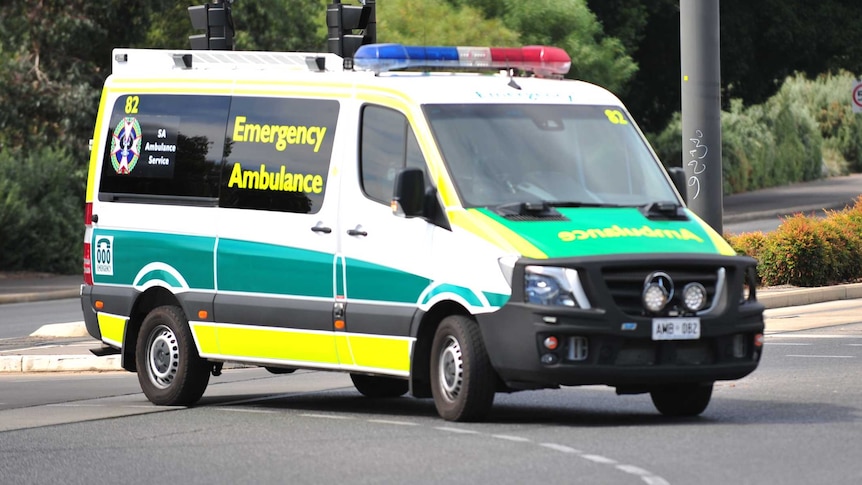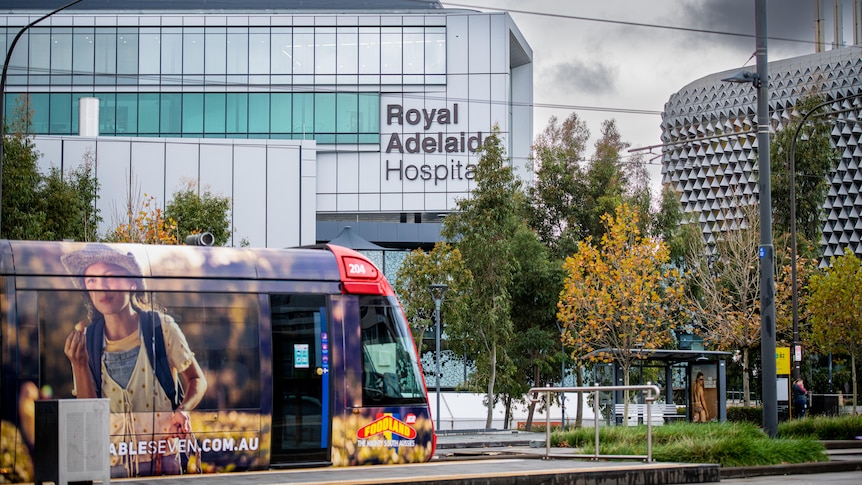Traumatic brain injuries, severe dislocations, and broken bones are some of the injuries Graeme Maw has seen come through the Townsville University Hospital from electric scooter (e-scooter) accidents.
Key points:
- A Townsville Hospital emergency physician says around one person a day presents to the hospital with injuries
- Data shows that 70 per cent of patients with e-scooter injuries are male, with the majority in the 18 to 30-year-old age group
- The RACQ says a crackdown on non-compliant e-scooter users is needed to improve safety
Emergency physician Dr Maw says staff would support a ban on the two-wheeled devices, as new research shows half of the riders are making potentially life-threatening decisions on Queensland roads.
He said approximately one person per day was presenting to the hospital with injuries ranging from skin abrasions to significant head trauma.
“Lots and lots of soft tissue injury, extensive grazing and abrasions. Lots and lots of lacerations that require suturing up,” Dr Maw said.
“Often, these patients go on to suffer relatively significant long-term impacts from these sort of injuries.
“There was one young man who came off a scooter after drinking. He came in deeply unconscious and was sent to intensive care. He went from being a functioning member of society with a job to spending months and months in hospital and rehabilitation.”
The Townsville University Hospital has been collecting data on the frequency of e-scooter accidents since the ride-sharing devices arrived in the city in 2020.
Dr Maw said about 50 per cent of patients presenting to an emergency were not wearing a helmet, and more than 75 per cent were under the influence of alcohol when an incident occurred.
The data showed 70 per cent of patients presenting to the hospital with e-scooter injuries were male, with the majority in the 18–30 age group.
But Dr Maw said the true extent of cases was being under-reported.
“It’s not just the people riding the scooters. We’ve had a few innocent bystanders knocked over,” he said.
“Not everybody who comes off an e-scooter ends up going to the emergency department.
“A lot of patients head to GPs, private hospitals, and some may not seek medical attention at all.”
Calls for help becoming ‘more frequent’
Queensland Ambulance Senior Operations Supervisor Wayne Paxton, from the Townsville district, said paramedics were responding to an e-scooter crash at least once or twice a week.
“It’s starting to become more and more frequent over the weeks and weekends,” Mr Paxton said.
“The types of injuries we deal with can vary from a small cut or abrasion to something like a head injury or fractured leg or shoulder injury.”
Amid the rising cost of fuel, Mr Paxton said more regional Queenslanders were choosing the cost-effective mode of transport.
He said their popularity would likely continue to rise but warned riders to be aware of the risks.
“I’ve been to accidents where the helmet has been on, but they haven’t done the strap up, and it has come off during the fall,” he said.
“If we don’t have the right education and don’t wear protective equipment … it can certainly lead to serious injuries and, worst-case scenario, more deaths.”
Safety not being taken seriously
With more regional Queensland cities such as Mackay, Rockhampton and Bundaberg taking part in the e-scooter rollout, a recent survey by the state’s peak motoring body found half of the riders admitted to reckless driving behaviour.
Andrew Kirk, principal technical researcher at RACQ, said a crackdown on non-compliant e-scooter users was needed to improve safety, as well as a stronger education campaign.
“Nearly one in 10 riders have had an accident, and over half of those have been injured,” he said.
“That comes down to lack of safety equipment, going too fast and riding in the wrong areas.”
Mr Kirk said RACQ had been in talks with e-scooter rental companies to incorporate new technologies, such as onboard cameras, to improve user safety and did not want to see them pulled from the streets.
“It’s getting cars off the road, so it’s reducing vehicle emissions and reducing traffic congestion,” he said.
“They do have a big role to play in Australia’s net-zero goals.
“Most bike riders have adapted to the fact you have to have a helmet on, but for e-scooters we just need to change that mentality to get people to do the right thing.”
.



